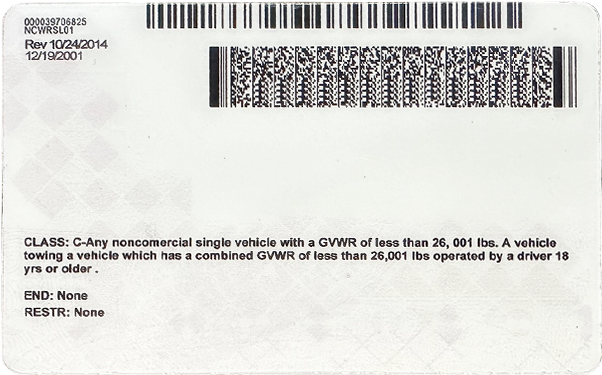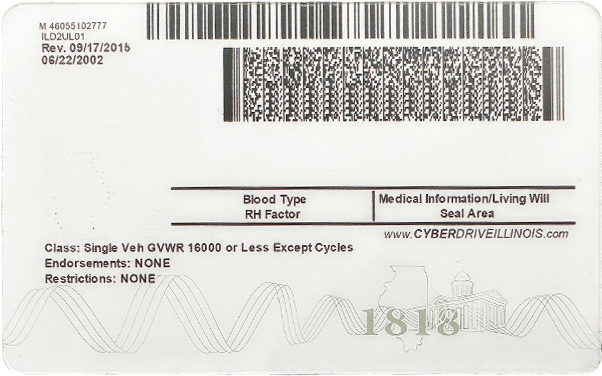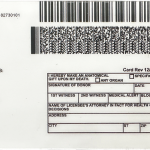Driver’s license verification is a crucial aspect for mobile app – based services, especially those in the transportation – related and ride – sharing industries. These services need to ensure that the individuals using their platforms as drivers are who they claim to be and are legally authorized to drive. Here are the common ways in which mobile app – based services verify driver’s licenses.
Document Capture and Optical Character Recognition (OCR)
The first step in the verification process is usually document capture. Mobile apps allow drivers to take photos of their driver’s licenses using the device’s camera. The app then uses Optical Character Recognition (OCR) technology. OCR software is designed to analyze the text on the driver’s license image. It can identify key information such as the driver’s full name, date of birth, license number, expiration date, and address. For example, if a ride – sharing app is verifying a driver, the app will prompt the driver to take a clear front – and back – view photo of their license. The OCR system will then extract the relevant text from these images. This method is relatively quick and convenient for the driver, as it can be done from the comfort of their own home or any location with a stable internet connection.

Database Cross – Referencing
Once the information from the driver’s license is extracted via OCR, mobile app – based services cross – reference this data with official databases. These databases are maintained by government agencies responsible for issuing driver’s licenses. For instance, in the United States, states have their own motor vehicle department databases. The app service will send the extracted data, such as the license number and the driver’s name, to these databases. The database will then respond with a verification result, indicating whether the license is valid, has been suspended, or revoked. This cross – referencing helps to ensure that the driver’s license is legitimate and that the driver has a clean driving record. It also helps to detect any potential fraud, such as a driver using a fake or stolen license.
Biometric Verification (Optional but Increasingly Popular)
Some mobile app – based services are also incorporating biometric verification as an additional layer of security in the driver’s license verification process. This can include fingerprint or facial recognition. After the initial document capture and database cross – referencing, the app may prompt the driver to provide a biometric scan. For example, a fingerprint scan can be used to match the identity of the person presenting the driver’s license with the individual using the app. Facial recognition works in a similar way, comparing the face in a selfie taken by the driver with the facial image on the driver’s license (if available) or in other official records. Biometric verification adds an extra level of certainty that the person is indeed the rightful owner of the driver’s license, reducing the risk of identity theft or impersonation.

Manual Review (in Some Cases)
In certain situations, mobile app – based services may conduct a manual review of the driver’s license verification process. This can happen when there are discrepancies in the data, such as an OCR error or when the database cross – reference returns an inconclusive result. Trained reviewers will then examine the driver’s license photos, the extracted data, and any other relevant information. They may also contact the driver for additional clarification or documentation. For example, if the OCR system misreads a character on the license number, the manual reviewer can compare the image with the extracted data and correct any errors. Manual review helps to ensure the accuracy of the verification process and can catch issues that automated systems may miss.
Common Problems and Solutions
1. OCR Errors
Problem: The OCR technology may misread text on the driver’s license, especially if the photo is blurry, the license has wear and tear, or the font is not standard. For example, a character in the license number or the driver’s name may be incorrectly identified.
Solution: Mobile app – based services can provide clear instructions to drivers on how to take high – quality photos of their licenses. They can also use more advanced OCR algorithms that are better at handling different font styles and image qualities. In case of an OCR error, as mentioned earlier, a manual review process can be initiated to correct the data.
2. Database Connectivity Issues
Problem: There may be issues with connecting to the official government databases for cross – referencing. This could be due to network outages on the service provider’s side, problems with the database server, or communication glitches between the app and the database.
Solution: App services should have redundant network connections and backup servers to minimize the impact of such outages. They can also implement error – handling mechanisms that will retry the connection after a certain period or provide alternative verification methods if the database connection cannot be established immediately. Additionally, having regular communication with the database providers to address any potential issues can help in reducing connectivity problems.
3. Biometric Compatibility Problems
Problem: Some mobile devices may not be compatible with the biometric verification features used by the app. For example, older devices may not have a fingerprint sensor or may have a low – quality camera for facial recognition.
Solution: App services can offer multiple biometric options or alternative verification methods for devices that are not fully compatible. They can also provide clear information about the device requirements for biometric verification in advance, so drivers can be aware of whether their devices will support the process. In cases where biometric verification is not possible due to device limitations, a more in – depth manual review or additional document – based verification can be carried out.
4. Driver Non – Compliance
Problem: Some drivers may not follow the proper procedures during the verification process. For example, they may submit low – quality photos of their licenses, provide false information, or try to bypass the verification steps.
Solution: Mobile app – based services can have strict policies and consequences for non – compliance. They can send reminders to drivers about the importance of following the verification procedures and the potential penalties for providing false information. Additionally, implementing identity checks at multiple stages of the driver’s use of the app, such as during account creation and periodic re – verification, can help to catch non – compliant behavior.
5. Privacy Concerns
Problem: Drivers may be concerned about the privacy of their personal information, especially when it comes to biometric data and the sharing of their driver’s license details with third – party app services.
Solution: App services need to be transparent about their data – handling practices. They should clearly communicate to drivers how their personal information will be used, stored, and protected. Implementing strong data encryption, adhering to strict privacy regulations, and limiting the access to personal data within the organization can help to alleviate these privacy concerns. Additionally, providing drivers with the option to review and control the sharing of their data can increase trust in the verification process.
Fake ID Pricing
unit price: $109
| Order Quantity | Price Per Card |
|---|---|
| 2-3 | $89 |
| 4-9 | $69 |
| 10+ | $66 |


